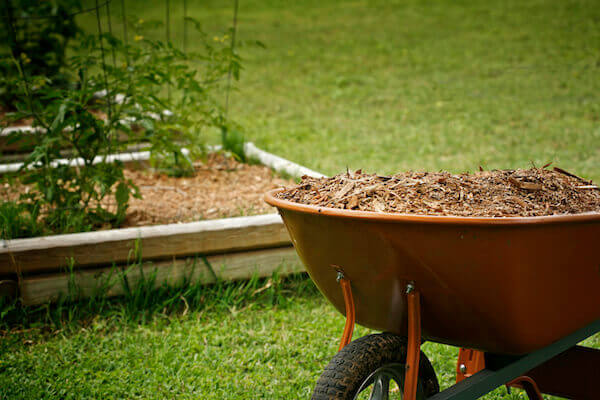
Mulch Responsibly
If you’re a homeowner, it’s likely you find great joy in keeping your lawn, as well as any garden areas, neat and clean. Who wouldn’t want to show off a great yard to their neighbors? If you’re looking for an easy way to become more environmentally responsible, mulch is a great place to start.
Organic mulch is wonderful for soil fertility because it decomposes more easily, reducing the need for fertilizers. Mulches help maintain soil moisture because it reduces evaporation greatly, leading to less supplemental irrigation necessary. Fresh mulch is also known to inhibit weed germination and growth, reducing the need for harmful herbicides; all that is needed is a little hand weeding. Another big plus for using mulch is that it keeps soils warmer in the winter and cooler in the summer, minimizing weather-related harm.
Making maintenance easier and reducing the likelihood of damage from string types of trimmers is yet another benefit of mulching responsibly. In an area that is difficult to mow, irrigate, or maintain, let the mulch do the bulk of the work for you. Consider placing it in shadier areas, where plants don’t grow as well.
How to get mulch
When it comes to organic mulch, the best place to start is in your own yard! There are many things that you might have previously thrown, raked, or otherwise disposed of in your yard that work wonderfully for mulching. Grass clippings, leaves or pine needles, and tree trimmings can all be chopped up and reused; this free mulch is the most environmentally sound, and least expensive way of returning nutrients to the soil. If you have more than you need, spread the “green” around and share your mulch (and new knowledge) with neighbors!
Yard waste that is collected and ground for residents is also an often available source if you’re looking to mulch responsibly. Free mulch is often available from your utility company or at your local landfill; all you have to do is ask. Contact your local utility company or landfill for the most information about what they can provide.
Of course, another option is to use store-bought mulch, but it’s suggested that you use by-product, or alternative mulches. Examples include pine bark, eucalyptus, or utility mulch. Cypress mulch is not recommended, because its origins are difficult to determine.
How to use mulch
Mulching is one of the easiest steps in maintaining your garden or landscape, as well as provide an element of color and texture to compliment your plantings. The best way to start is by adding a two- to three-inch layer of mulch around plants and trees. Be sure to keep the mulch a few inches away from the base of these plants, or rotting may occur. If you have any citrus trees on your lawn, don’t mulch them. Keep an eye on it throughout the year once you’ve finished, since it’s suggested you replenish the mulch once or twice a year to maintain the two- to three-inch depth. You can even create self-mulching areas under trees where the leaves can stay where they fall, which makes the job even easier for you!
It’s suggested to keep trimmings from invasive exotic plant species out of your mulch, because it may spread the seeds. And of course, never throw excess clippings or mulch down a storm drain. It may seem like an easy way to dispose of extra clippings, but doing so can facilitate the migration of plant species, and clog drains.
If you choose to purchase bags containing two cubic feet of mulch, check out the helpful chart below. The inches (two to four) represent the depth of mulch you will need to lay down:
| Your Plant Bed in Sq. Ft. | 2 Inches | 3 Inches | 4 Inches |
| 25 sq. ft. | 2 bags | 3 bags | 4 bags |
| 50 sq. ft. | 4 bags | 6 bags | 9 bags |
| 100 sq. ft. | 9 bags | 13 bags | 17 bags |
It’s clear that mulching is one of many ways to make your garden or overall yard more green and thriving. All it takes is a change in your mulching perspective to get the ball rolling (or the yard prospering, and Duda Sod is here to help! Give them a call today; your lawn will be the pride of the neighborhood in no time.